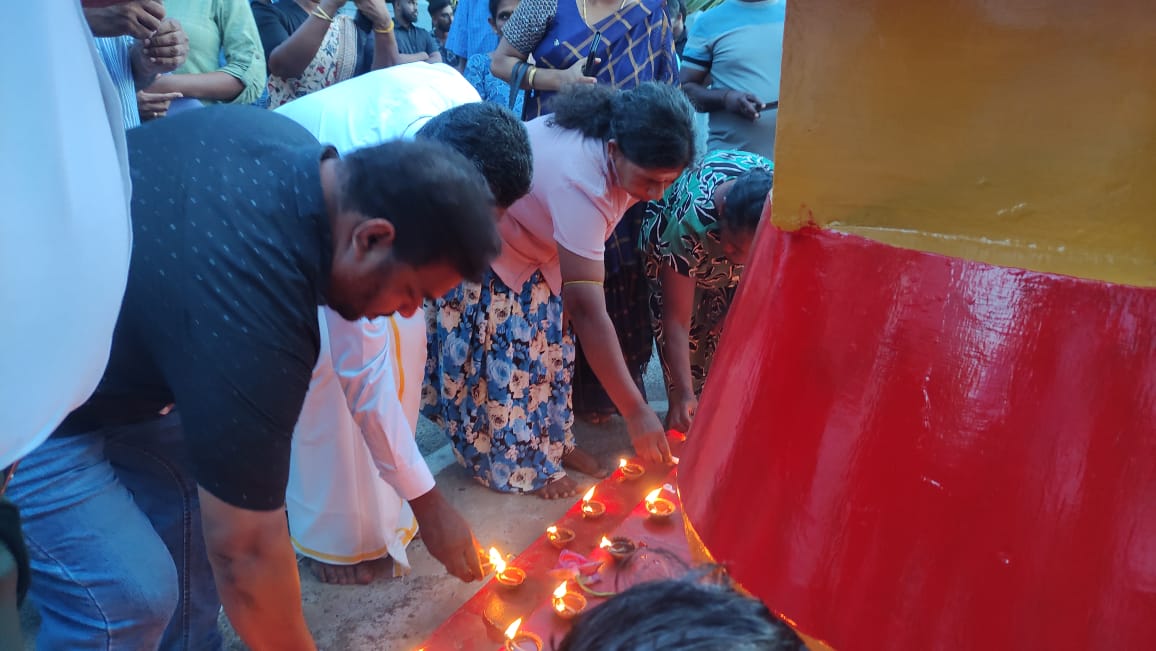Batticaloa, Sri Lanka | 9 September 2025
On the 35th anniversary of the Sathurukkondan massacre, survivors, families of victims, and civil society representatives gathered at the memorial site in Manmunai North, Batticaloa, to honor the memory of 186 Eelam Tamil civilians brutally killed on 9 September 1990. The commemoration was marked by floral tributes, candle lighting, and a renewed international appeal for justice.
The massacre—carried out by the Sri Lankan military and allied Muslim paramilitary units—targeted civilians from the villages of Panichchayadi (39 victims), Pillayaradi (62), Kokuvil (47), and Sathurukkondan (38). Victims included infants, pregnant women, the elderly, and others who were reportedly stabbed, shot, and buried in mass graves at the Boys Town military base.
A Survivor’s Testimony and a Silenced Inquiry
The truth of the massacre came to light only after a lone survivor escaped and exposed the atrocities. In response to mounting international pressure, then-President Chandrika Kumaratunga appointed a Presidential Commission of Inquiry, which identified several perpetrators. Yet, no prosecutions followed, and the Commission’s findings were never acted upon.
For 35 years, successive governments have failed to deliver justice, despite clear evidence and repeated calls from victims’ families and human rights advocates. The Sri Lankan State remains accused as the principal perpetrator, with impunity prevailing.
A Global Appeal for Accountability
In a formal communication addressed to the UN High Commissioner for Human Rights and Member States of the UN Human Rights Council, survivors and community leaders demanded:
- The establishment of an international, independent, and impartial investigative mechanism to probe genocide and other international crimes against Eelam Tamils.
- The application of the Bournemouth Protocol with international oversight in all mass grave excavations, including Sathurukkondan.
- Sustained international pressure to prevent future genocidal acts and ensure accountability.
Multiple UN Special Rapporteurs, independent investigations, and human rights organizations have concluded that the massacre forms part of a systematic campaign of genocide against the Tamil population in Sri Lanka’s North and East.
Ongoing Intimidation and Resistance
Local media reports and human rights monitors have documented intimidation by Sri Lankan security forces during memorial preparations in recent years, including threats to remove plaques that name the military as responsible. Despite this, the community continues to resist erasure and demand recognition.
As the world watches, the call from Sathurukkondan echoes far beyond Batticaloa: justice delayed is justice denied, and the international community must act.
Press release in fullCommemorating the 35th Anniversary of the Sathurukkondan Genocidal Massacre
